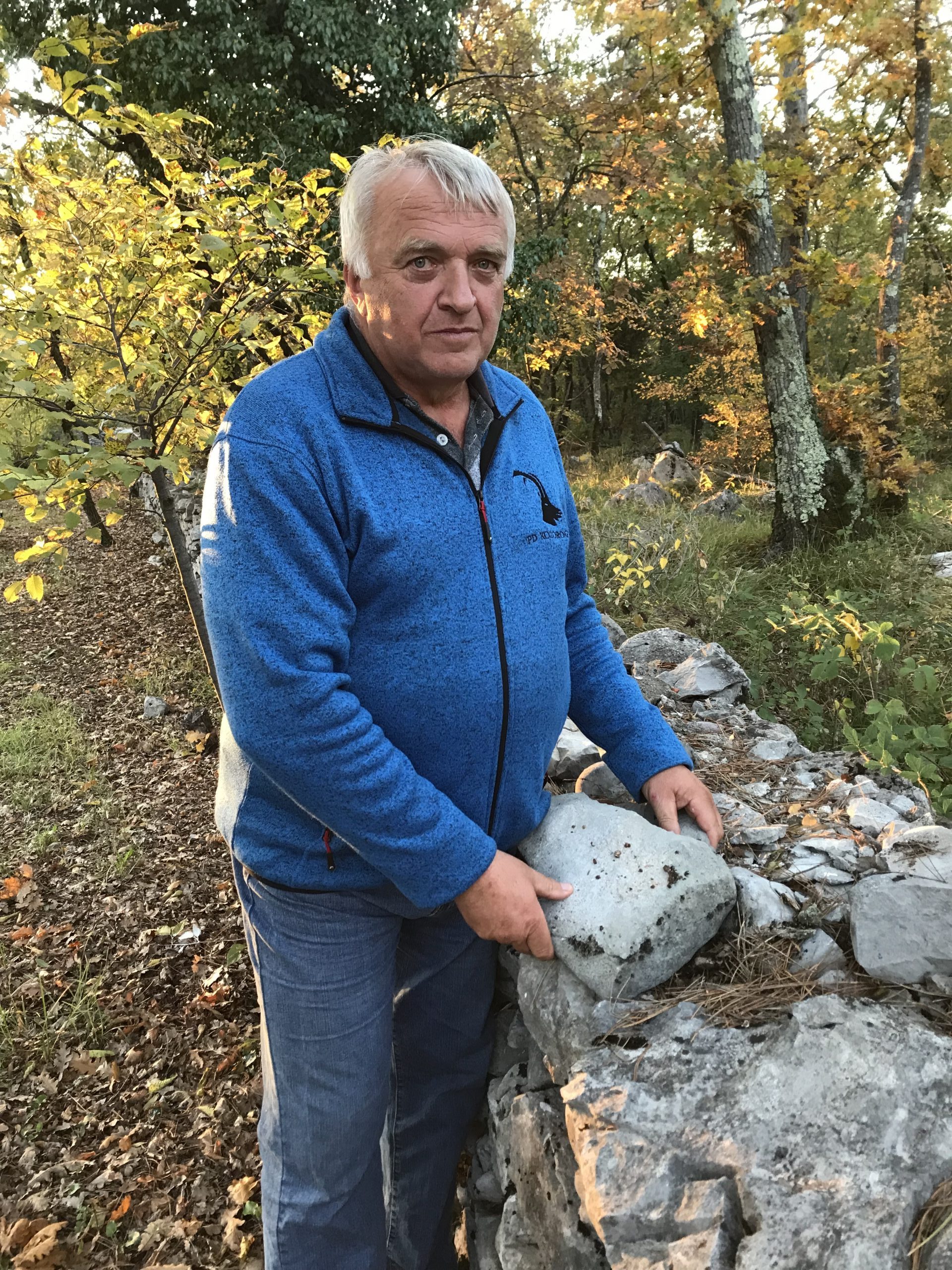Description
The Karst Living Museum is one of the larger open-air museums in Europe. The area of the museum stretches along the western border of Slovenia: between Sežana, Lipica, and the former Slovenian-Italian border. There are many thematic and cross-border recreational trails as well as points of interest. Visiting the Karst Living Museum offers a unique experience. The museum is located in the area of so the so-called classical karst with the highest intensity of karst phenomena: sinkholes, collapse dolines, limestone pavements (škrapljišča), chasms, and, of course, underground caves and the whole area is identified as an ecologically important area. Deep beneath the surface the cross-border river Reka / Timav flows.
The nice thing about this museum is that there is no entrance fee, it is open 24 hours a day, 7 days a week, you can touch all the exhibits, and take pictures with flash J. Most of the museum is a part of the Natura 2000 area. The Karst Living Museum was named the best thematic trail in Slovenia in 2017, covering 700 hectares and 20 km of cycling and hiking trails.
Intention
Slovenia is a karst land and it was the Slovenian Karst that lent its name to karst landscapes and phenomena across the world, for it was here that the scientists first explained numerous karst phenomena.
The Karst Living Museum represents the typical karst landscape and it’s where I grew up as a local. The Museum was created as a part of a European project. I helped with most of the paths and provided information about the area, because I know the area as the back of my hand. It is very important that the karst landscape is preserved and also treated as a museum! Young people need to be shown the importance of the Karst and nature conservation in general. Apart from this, the open-air museum is an important incentive for tourism in the Karst and is a fine example of how a piece of nature can be preserved for future generations. The museum is visited by many schools, groups, and individuals who crave genuine contact with nature. I am really happy to have been involved in the creation of this project as well as being able to contribute all the the knowledge that has amassed over all these years.
Opis
To je eden večjih muzejev na prostem. Območje muzeja v naravi se razteza ob zahodni meji Slovenije: med Sežano, Lipico in bivšo slovensko-italijansko mejo. V okviru muzeja so urejene tematske in čezmejne rekreacijske poti ter označene interesne točke. Obisk Živega muzeja Krasa je izjemno doživetje, saj je umeščen v območje t.i. klasičnega krasa z največjo intenziteto kraških pojavov: vrtače, uvale, udorne doline, škrapljišča, brezna in seveda podzemne jame, območje je opredeljeno kot ekološko pomembno. Globoko pod površjem teče čezmejna reka Reka / Timav.
Fajn pri tem muzeju je, da ni vstopnine, odprt je 24 ur na dan 7 dni na teden in vseh razstavnih eksponatov se lahko dotikate in fotografiranje je dovoljeno tudi s flešem.
Njegov večji del sodi v območje Natura 2000. Leta 2017 je bil Živi muzej Krasa izbran za najboljšo tematsko pot v Sloveniji obsega 700 hektarov in 20 km kolesarskih in pohodniških poti.
Namen
Slovenija je kraška dežela in prav njen Kras je dal ime vsem tovrstnim pojavom sveta, saj so tam strokovnjaki te pojave najprej analizirali.
Živi muzej Krasa predstavlja tipično kraško pokrajino na kateri sem kot domačin zrastel. Muzej je nastal v okviru Evropskega projekta, večino poti, informacij o področju sem pomagal sestaviti, ker področje poznam kot lastne žep. Zelo pomembno je, da se kraški tip pokrajine ohrani in tudi obravnava kot muzej! Mladim je treba pokazati pomen Krasa, ohranjanja narave. Muzej na prostem je tudi pomembna spodbuda za turizem na Krasu. To je lep primer kako se lahko ohrani delček narave. Muzej obišče veliko šol, skupin in posameznikov, ki si želijo pristen stik z naravo. Res sem vesel, da sem sodeloval pri nastajanju tega projekta in je moje znanje, ki sem ga pridobil v vseh teh letih komu prišlo prav.
Beschreibung
Das Lebendige Karst Museum ist eines der größerem Open-Air-Museen in Europa. Sein Gebiet erstreckt sich über die ganze westliche Grenze Sloweniens: zwischen Sežana, Lipica, und der früheren slowenisch-italienischen Grenze. Es gibt zahlreiche thematische und grenzübergreifende Wege, die der Erholung dienen, und viele Attraktionen.
Der Besuch des Karstmuseums ist eine besondere Erfahrung. Das Museum befindet sich im sogenannten klassischen Karst, der die höchste Dichte an Karst-Phänomenen hat: erhaltene und eingestürzte Dolinen, Kalksteinpflaster (škrapljišča), Klüfte, und, natürlich, unterirdische Höhlen. Das ganze Areal wird als ökologisch wichtiges Gebiet eingestuft. Weit unter der Oberfläche fließt der Grenzfluss Reka / Timav.
Das Schöne an diesem Museum ist, dass der Eintritt frei ist. Es ist 24 Stunden am Tag und sieben Tage in der Woche geöffnet, und man kann all die Ausstellungsstücke anfassen und Fotos mit Blitz schießen J.
Der größte Teil es Museums ist Teil des Natura 2000 Gebiets. Seinen Namen erhielt das Lebendige Karstmuseum vom besten thematischen Weg im Jahre 2017, es umfasst 700 Hektar Land und 20 km Rad- und Wanderwege.
Absicht
Slowenien ist ein Karstland und es war der slowenische Karst, der den anderen Karstlandschaften und -phänomenen der Welt ihren Namen gab, da hier Karstphänomene erstmal von der Wissenschaft erfolgreich erforscht werden konnten.
Das Lebendige Karst Museum repräsentiert die typische Karstlandschaft, in der ich aufgewachsen bin. Das Museum entstand im Rahmen eines europäischen Projekts.
Ich half bei den meisten Wegen mit und lieferte Informationen über die Gegend, weil ich sie wie meine Westentasche kenne.
Es ist sehr wichtig, dass die Karstlandschaft erhalten bleibt und wie ein Museum behandelt wird! Jungen Menschen muss die Bedeutung des Karsts, aber auch des Naturschutzes allgemein vermittelt werden. Außerdem ist das Open Air-Museum eine wichtige Touristenattraktion und ein gutes Beispiel dafür, wie ein Stück Natur für zukünftige Generationen erhalten werden kann.
Das Museum wird von vielen Schulen, Gruppen und Einzelpersonen aufgesucht, die sich nach dem Kontakt mit der Natur sehnen.
Ich bin glücklich darüber, bei der Entstehung dieses Projekts beteiligt gewesen zu sein und einen Beitrag zu all dem Wissen geleistet zu haben, das sich über all die Jahre angesammelt hat.


